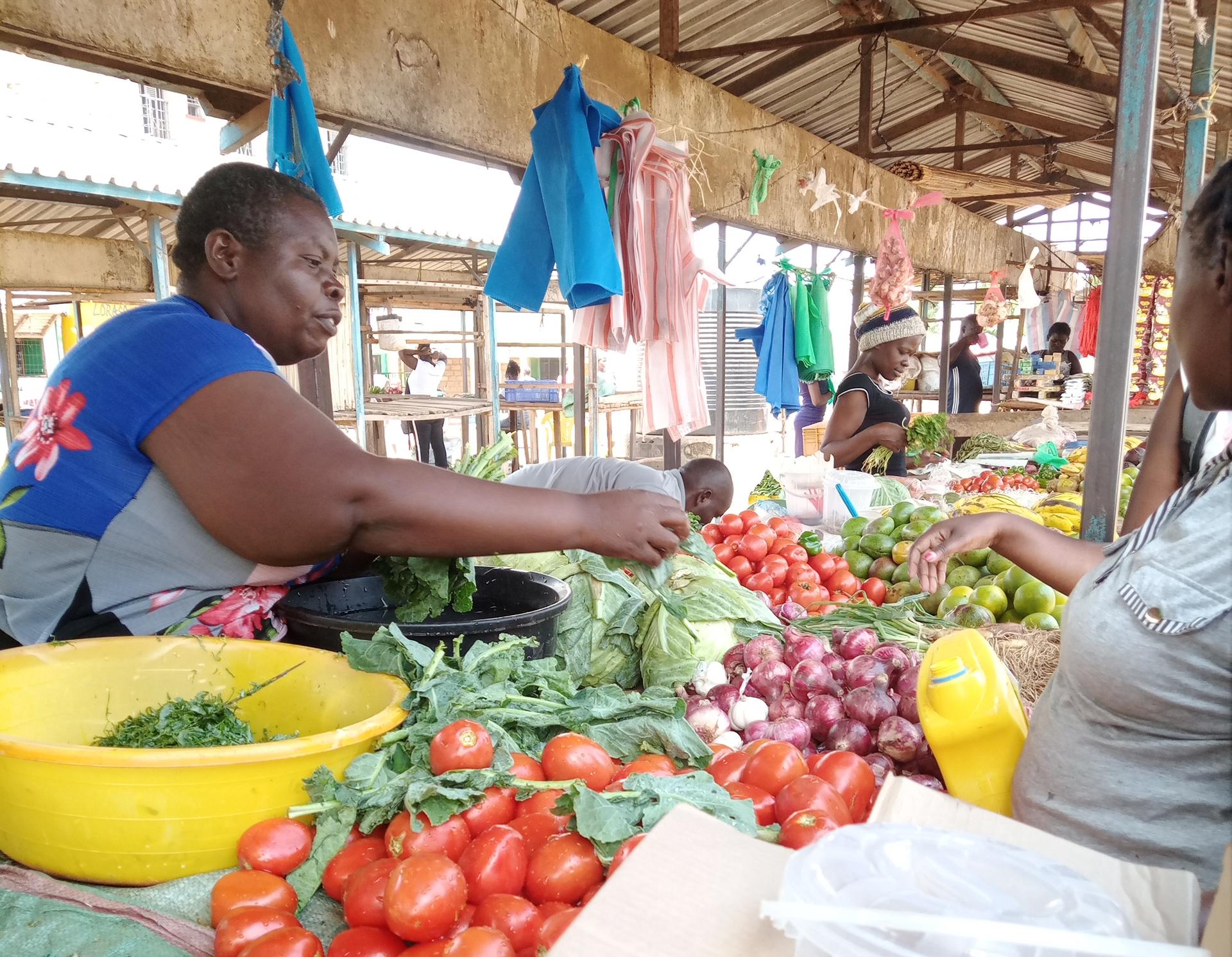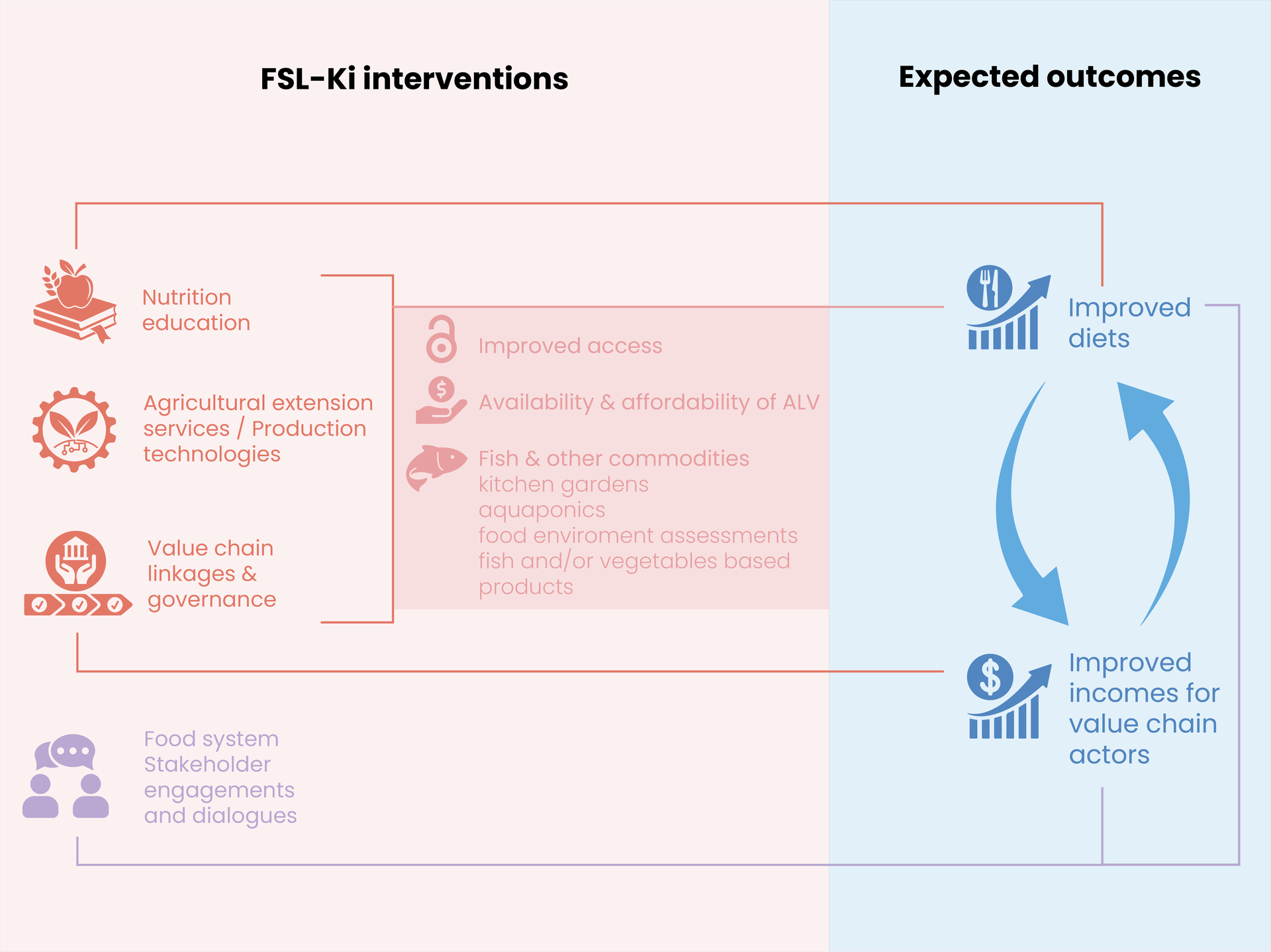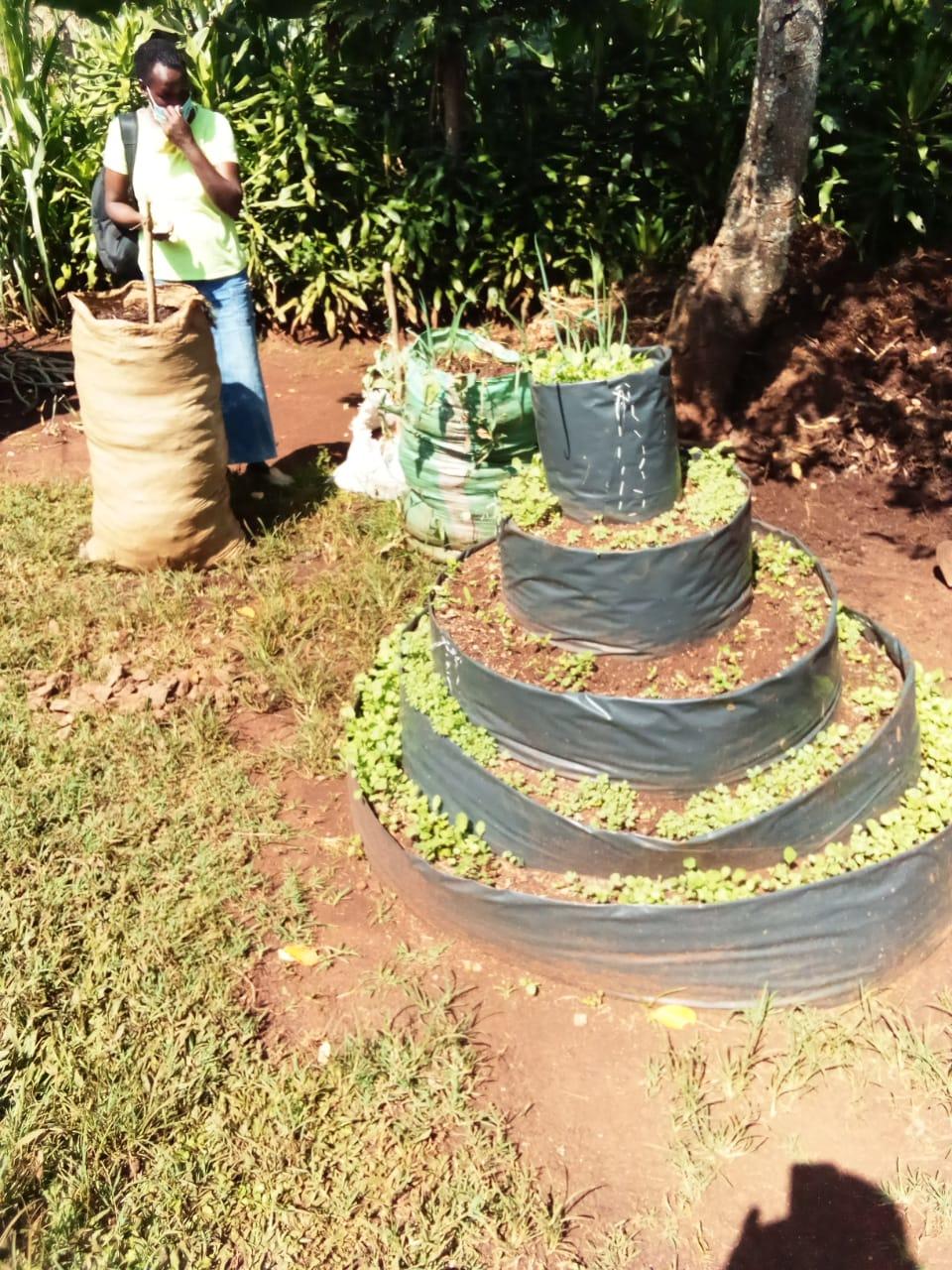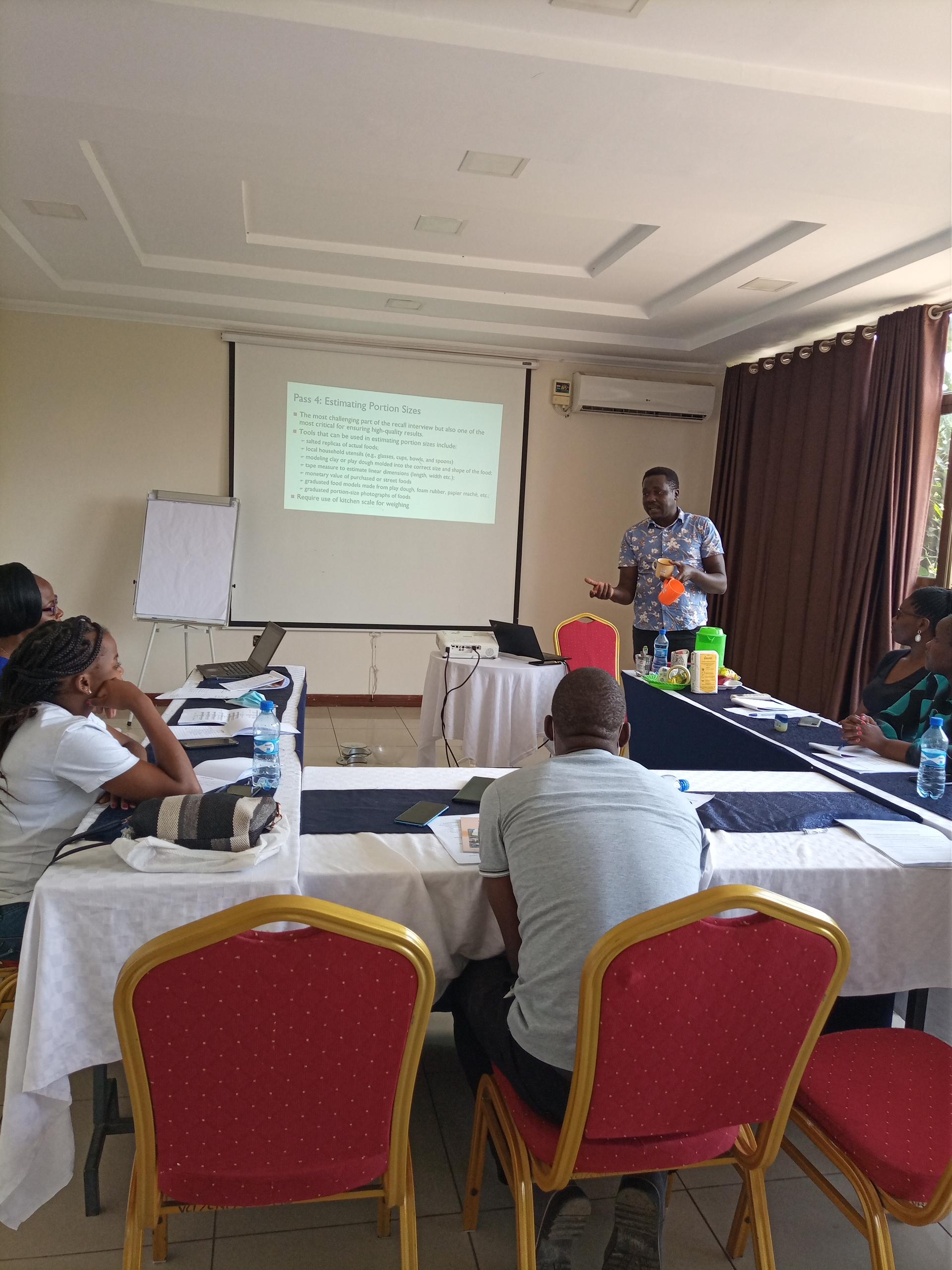From the Field How is the Food Systems Lab improving urban diets in Kisumu, Kenya?

Find out how Alliance researchers are collaborating with residents in low-income neighborhoods to improve production and consumption of nutritious foods such as African Leafy Vegetables and fish.
By Christine Chege, Casey Tokeshi, Consolata Musita
Understanding access to nutritious food
In Kisumu, a Kenyan port city on Lake Victoria, low-income residents face limited access to nutritious foods, resulting in poor diet quality. This is a serious problem not just for the health and wellbeing of individuals, but also carries detrimental social, economic and environmental consequences.
Overcoming these challenges and achieving Zero Hunger (UN Sustainable Development Goal 2) requires a multi-sectoral approach. This is exemplified by the Kisumu Food System Lab (FSL-Ki), an Alliance of Bioversity and CIAT-led initiative under the HealthyFoodAfrica Project, that spans diverse sectors including health, nutrition, agriculture, fisheries and education. Its goal? Deliver diverse, safe, nutritious and affordable foods to the urban poor.
The Lab works in two key value chains: African Leafy Vegetables (ALVs) and fish, implementing activities across diverse components of the food system (Figure 1).

Figure 1: FSL-Ki interventions and expected outcomes. Graphic design: Carolina Polo.
Innovating for a healthier diet
The project is applying innovative production techniques to set up urban gardens and aquaponics. In urban gardens, women and youth produce vegetables primarily for home consumption, and sell to neighbors and other consumers when there is a surplus. These gardens provide access to nutritious produce that is often too expensive for low-income households to purchase and consume on a regular basis. Likewise, aquaponics increase access to fish and vegetables for home consumption and for additional sales. Nutrition education further increases consumer awareness on what they need to eat to attain a healthy diet, and why this is important.

A vertical vegetable garden by a household in urban Kisumu. Credit: R.Ouko/Alliance
Many challenges currently exist in the fish and ALV value chains in Kisumu region. Over the course of the Food Systems Lab, researchers plan to work with stakeholders to address some of the most persistent value chain barriers. These include market access for producers, value chain governance, commodity access by consumers, and timely availability of commodities by traders. Improving functionality of the value chains will make these two nutritious commodities more readily available and affordable to consumers, hence improving their consumption and diets, as well as their livelihoods.
Gathering high quality agri-nutrition data
Data is important for informed decision-making by policymakers, business entities and other food system actors; however, in many countries including Kenya, data that links agriculture and nutrition is still unavailable or insufficient. During the HealthyFoodAfrica project’s baseline study, Food Systems Lab researchers started to collect diverse agriculture and nutrition data to better understand the current food system situation and identify how diets can be improved in an agricultural-oriented setup. The studies include:
Food environment assessment
Vendor mapping, in-depth vendor surveys, and key informant interviews were conducted in four informal settlements of urban Kisumu: Manyatta A, Manyatta B, Obunga, and Bandani. Data collected included identification of foods, point of sale, gender dynamics of the seller, and vendor typologies. A total of 2,900 vendors were mapped. The goal of these studies was to understand how the food environment influences consumer food choices and dietary patterns.

A woman displaying fish for sale in a market in Kisumu. Credit: C.Tokeshi/Alliance
Household consumer survey
Quantitative household surveys were conducted with 500 households across the four slums, targeting households with women of reproductive age (15-49 years) and children aged 6-23 months. The aim of this survey was to assess the food consumption, dietary diversity, food acquisition, nutrition knowledge, attitudes and practices (KAP), and urban crop, fish, and animal production, among others.
Further, in-depth household interviews were conducted with 20 households to qualitatively capture the broader experience of these households within their food environment as well as further understand their food consumption behaviors. Finally, 24-hour recall data on food consumption were also collected.
Data obtained from these surveys will be instrumental in generating the nutrition profile of FSL-Ki and informing the project’s interventions, especially in creating nutrition education and awareness materials, setting up kitchen gardens and aquaponics.

A woman measuring foods consumed during consumer survey. Credit: C.Musita/Alliance
Policy and program interviews
Ten key informant interviews were conducted with various actors including county governing officials, market leaders, and NGO representatives, in order to understand the food environment, especially fruits, vegetables, and fish value chains, through a structural lens. These interviews also included questions about policies and programs affecting urban informal settlements’ food consumption behavior.

Value chain assessment surveys
Taking a deep dive into the two-focus value chains, researchers are mapping the complete value chain to see how commodities flow from production to consumption. Kisumu is adjacent to Lake Victoria, and a high amount and diversity of fish are produced in this area, although as reported by the residents, the majority of the Kisumu fish does not reach the average Kisumu consumer’s plate. Likewise, assessment of the African Leafy Vegetable value chain will help to identify its commodity flow, plus challenges and opportunities for increasing its consumption.
